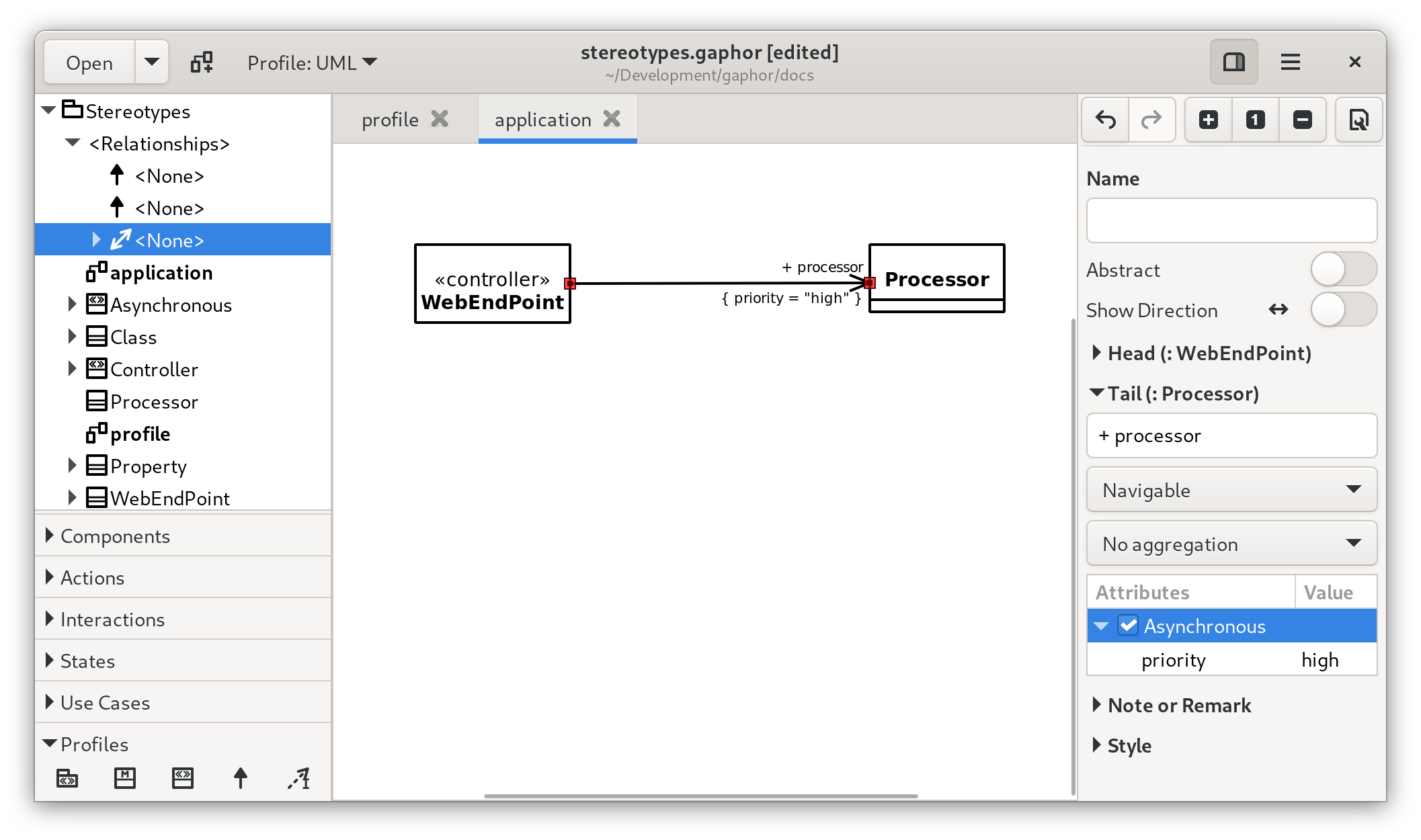Stereotypes¶
In UML, stereotypes are way to extend the application of the UML language to new domains. For example: SysML started as a profile for UML.
Gaphor supports stereotypes too. They’re the way for you to adapt your models to your specific needs.
The UML, SysML, RAAML and other models used in Gaphor – the code is generated from Gaphor model files – make use of stereotypes to provide specific information used when generating the data model code.
To create a stereotype, ensure the UML Profile is active and open the Profile
section of the toolbox. First add a Metaclass to your diagram. Next add a
Stereotype, and connect both with a Extension.
The «metaclass» stereotype will only show once the Extension is connected
both class and stereotype.
Note
The class names in the metaclass should be a class name from the UML model,
such as Class, Interface, Property, Association.
Or even Element if you want to use the stereotype on all elements.
Your stereotype declaration may look something like this:
The Asynchronous stereotype has a property priority. This property can
be proved a value once the stereotype is applied to a Property, such as an
association end.
When a stereotype can be applied to a model element, a Stereotype section will appear in the editor.

Creating a profile¶
In SysML extending the profile using stereotypes is often required to tailor the model to your needs. For example, creating Customer vs System requirements.
To add a profile to your model:¶
Create a package called
profilethis can be done by right clicking in the left hand column.Switch modelling language to the UML profile (top of left hand menu drop down)
Within the package create a profile diagram (prf)
Add a profile element to the diagram
Add a meta-class element to the diagram, within the profile.
Add a stereotype element to the diagram, within the profile.
Connect meta-class and stereotype with an Extension relation. The head should be attached to the class. As soon as the Extension is connected, the class will get a stereotype metaclass assigned.
With the meta-class and stereotype placed on the diagram, either:
Double-click the meta-class and name it after the base element you want to create your stereotype from.
Select the base element from the drop down menu in the Property Editor on the right hand side. In this case only UML elements can be used as base elements.
Styling Stereotypes¶
You can apply styling to stereotypes. For example here the base element requirement has a stereotype system requirement
/*Add style to Requirement element*/
requirement{
background-color: #C5E7E7;
text-color: #2A2A2A;
}
/*Update Requirement styling for the System stereotype*/
requirement[appliedStereotype.classifier.name=system]{
background-color: #D5F7E7;
text-color: #2A2A2A;
}
Style Sheets has more detail on how CSS works in Gaphor